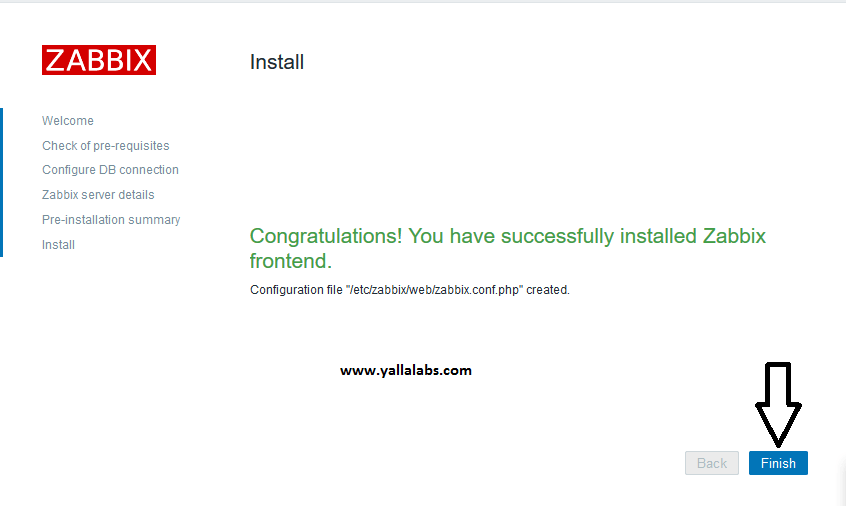How To Install Hping3 On Centos 7
Download hping3-0.0.20051105-24.el7.x86_64.rpm for CentOS 7 from EPEL repository. CentOS 7: Repository: EPEL x86_64: Package name. Install hping3 rpm package. This document describes the installation of a CentOS 7.3 server. The purpose of this guide is to provide a minimal setup that can be used as basis for our other tutorials here at howtoforge like the perfect server guides or the SAMBA, LAMP and LEMP server tutorials. Compiling hping on CentOS. Posted on June 12, 2012 by john 5,849 views Intro hping was recommend to me as a tool to stage a mock DOS test against one of our servers. I found that I did not have it installed on my CentOS 6 instance and could not find it with a yum search. On the Raspberry Pi it was simple to install hping3: $ sudo apt-get. How to Install MySQL on CentOS 7. Updated Tuesday. Run the mysql_secure_installation script to address several security concerns in a default MySQL installation. When installing python modules globally you should prefer to install distribution provided python modules using yum because they are tested to work properly on CentOS 7. Use pip to install python modules globally only if there is no rpm package for the python module. These instructions are intended specifically for installing Pip, a tool for installing and managing Python packages. I’ll be working from a Liquid Web Core Managed CentOS 7.
Kubernetes is an open-source system used for automating the deployment, scaling, and management of containerized applications. Kubernetes is enterprise-ready and can be installed on various platforms. I've already touched on how to get Kubernetes up and running on Ubuntu Server (see 'How to quickly install Kubernetes on Ubuntu'). This time around, I'm going to walk you through the process of setting up a Kubernetes cluster on CentOS 7. This makes for an outstanding one-two punch for your containerized applications.
SEE: Quick glossary: Storage (Tech Pro Research)
What you'll need
I'll be demonstrating with three CentOS 7 servers (at the following IP addresses):
- kubemaster: 192.168.1.99
- kube2: 192.168.1.109
- kube3: 192.168.1.167
Make sure to change the IP addresses to fit your needs. You'll also need root access on all three servers. I do suggest first testing this on virtual machines, before attempting the installation on production servers.
With that said, let's install.
Pre-installation configuration

The first thing you want to do is configure your /etc/hosts file, so that each machine can ping one another via hostname. So on each machine, issue the su command (to change to the root user) and then edit the file with the command nano /etc/hosts. At the end of the file, append the following (again, adjusting the IP addresses to fit your needs):
Save and close that file.
How To Install Hping In Centos 7
Disable SELinux and swap
Now we need to disable both SELinux and swap. On all three machines, issue the following commands:
Next, disable swap (on all three machines) with the following command:
We must also ensure that swap isn't re-enabled during a reboot on each server. Open up the /etc/fstab and comment out the swap entry like this:
Enable br_netfilter
How To Install Hping3 On Centos 7 Download
For our next trick, we'll be enabling the br_netfilter kernel module on all three servers. This is done with the following commands:
Install Docker-ce
It's time to install the necessary Docker tool. On all three machines, install the Docker-ce dependencies with the following command:
Next, add the Docker-ce repository with the command:
Install Docker-ce with the command:
Install Kubernetes
This is also done on all three servers. First we need to create a repository entry for yum. To do this, issue the command nano /etc/yum.repos.d/kubernetes.repo and then add the following contents:
Save and close that file. Install Kubernetes with the command:
Once the installation completes, reboot all three machines. As soon as each machine has rebooted, log back in and su to the root user.
Cgroup changes
Now we need to ensure that both Docker-ce and Kubernetes belong to the same control group (cgroup). By default, Docker should already belong to cgroupfs (you can check this with the command docker info grep -i cgroup). To add Kubernetes to this, issue the command:
Restart the systemd daemon and the kubelet service with the commands:
Initialize the Kubernetes cluster
We're now ready to initialize the Kubernetes cluster. This is done on kubemaster (and only on that machine). On kubemaster, issue the command (again, adjusting the IP addresses to fit your needs):
When this completes (it'll take anywhere from 30 seconds to 5 minutes), the output should include the joining command for your nodes (Figure A).
Figure A

Once that completes, head over to kube2 and issue the command (adjusting the IP address to fit your needs):
Langkah pertama adalah mendownload program aircrack tanpa embel-embel iklan. Instal aplikasi secara manual di handphone android sobat, restart setelah instalasi selesai untuk memaksimalkan kinerjanya. Hidupkan wifi handphone sobat. Buka aplikasi penetrate pro maka secara otomatis melacak password wifi. Cara menggunakan wireshark di linux mint. Aplikasi melacak nomor hp yaitu google maps atau google earth dan situs – situs internet lainnya yang di sediakan untuk melacak nomor hp. Tetntunya cara yang akan kami bagikan bisa di gunakan untuk operator apa saja. Untuk cara mudah mengetahui password wifi orang lain langkah pertama yang harus di lakukan yaitu mendownload dahulu aplikasi tersebut. Setelah sukses mendownload aplikasi WireShark tersebut langkah seterusnya yaitu menjalankan software pembobol wifi. Wireshark (Download Disini) Oke Berikut langkah-langkahnya: Menggunakan Cain & Abel: Buka Program Cain and Abel anda. Sudah di coba di beberapa wifi kampus ternama di jakarta dan berhasil. Di sana lengkap dengan penjelasannya. Ga ribet, simple cuma butuh 5menit. Reply Delete.
Where TOKEN and DISCOVERY_TOKEN are the tokens displayed after the initialization command completes.
Configuring Kubernetes
Before Kubernetes can be used, we must take care of a bit of configuration. Issue the following three commands (to create a new .kube configuration directory, copy the necessary configuration file, and give the file the proper ownership):
Deploy flannel network
Now we must deploy the flannel network to the cluster with the command:
Checking your nodes
Once the deploy command completes, you should be able to see both nodes on the master, by issuing the command kubectl get nodes (Figure B).
Figure B
All ready
Congratulations, you now have a Kubernetes cluster ready for pods. I'll be demonstrating how to deploy your first pod when next we visit the Kubernetes topic. Until then, happy clustering!
Also see
- How to deploy NGINX on a Kubernetes cluster (TechRepublic)
- 10 Kubernetes tips for getting the most out of the open source container system (TechRepublic)
- How to use Antsle to quickly deploy a virtual machine (TechRepublic)
- How to easily edit a network connection on a CentOS 7 minimal installation (TechRepublic)
- Red Hat introduces Kubernetes Operators software development toolkit (ZDNet)
